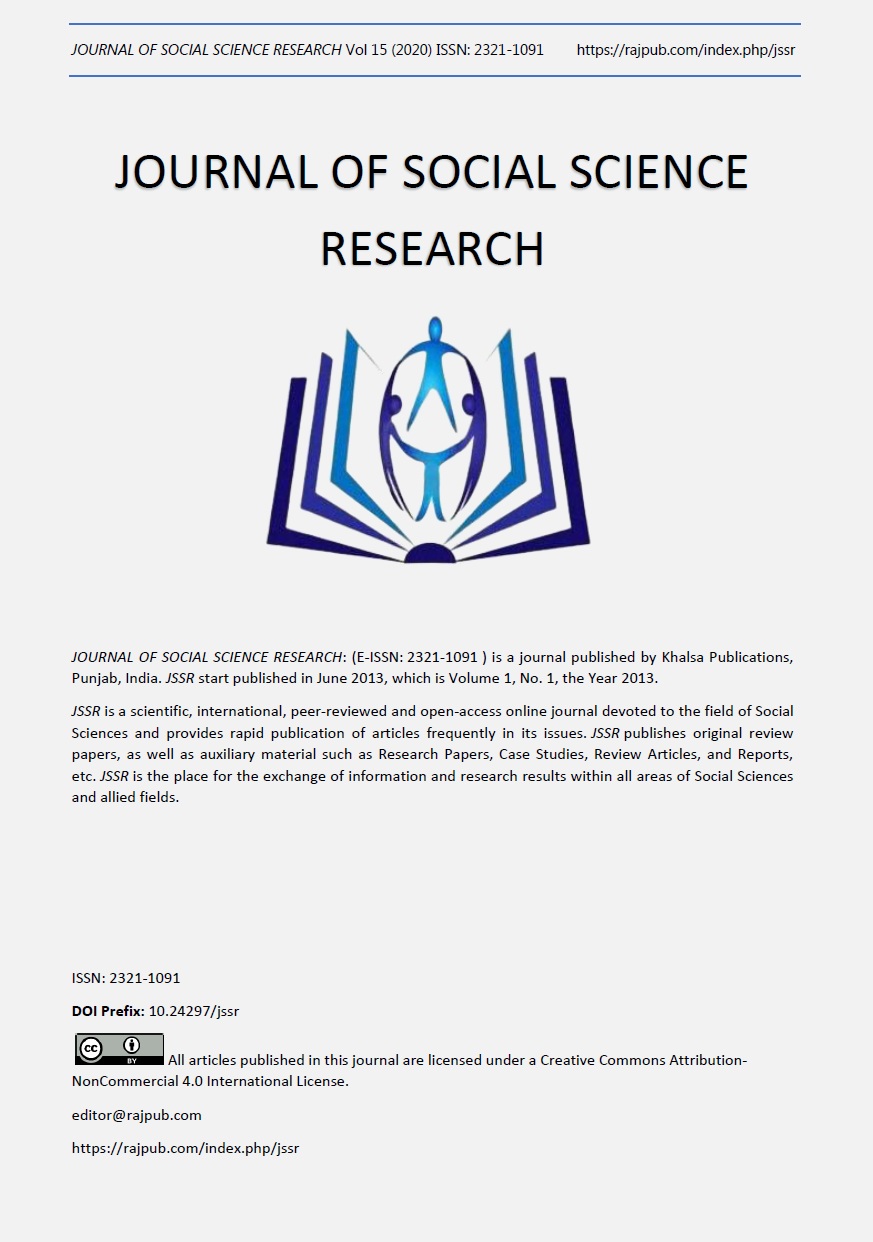A Case Study in Curriculum Change on Practicum in A Tesl Programme in Two Malaysian Institutions of Higher Learning
DOI:
https://doi.org/10.24297/jssr.v15i.8596Keywords:
Curriculum Change, Practicum, Pre-service TeachersAbstract
This study attempts to explain the importance of curriculum change in Higher Learning Institutions. It’s objectives were to identify the similarities and differences between two institutions of Higher Learning in terms of curriculum structure, teaching process and teachers’ digital skills and also examine whether the curriculum change in their respective training programmes produce better quality teachers in Malaysian schools. A qualitative research incorporating questionnaire, document analysis and interviews was conducted to obtain the results.. The data obtained from the study participants were analyzed qualitatively. The findings of the study reveal that (i) both the Higher Learning Institutions have similarities in prioratizing subject matter, professional standards and practical training (ii) Both of them share the same view that curriculum change has produced better quality teachers. The study concludes by predicting there will be more innovative changes in curriculum designing in the Higher Learning Institutions in future. However, it has recommended more classroom activities for students.
Downloads
References
Blackmore, P., & Kandiko, C.B. (2012). Processes and resources. In P. Blackmore & C.B. Kandiko (Eds.), Strategic curriculum change: Global trends in universities. Abingdon, UK: Routledge.
Bocock, J. (1994). Curriculum change and professional identity: The role of the university lecturer, in J. Bocock & D. Watson, eds, Managing the University Curriculum: Making Common Cause, Open University Press, 116-126.
Bogdan, R. C. & Biklen, K. S. (2003). Qualitative Research for Education. An
Introduction to Theory and Methods. Boston: Allyn and Bacon.
Bryman, A. (2004). Social Research Methods. New York: Oxford University Press.
Burns, R. B. (1997). Introduction to research methods. Addison Wesley Longman.
Bush, T. (2007). Educational leadership and management: Theory, policy and practice. South African Journal of Education, 27(3), 391-406.
Charmaz, K. (2006). Constructing Grounded Theory. London: Sage Publications.
Cohen, L. Manion, L. & Morrison K. (2000). Research Methods in Education. London: Routledge Falmer.
Creswell, J. W. (1998). Qualitative inquiry and Research Design. Thousand Oaks: Sage.
De la Harpe, B., & Radloff, A. (2006). Lessons learned from three projects to design learning environments that support ‘generic’ skill development. Journal of Learning Design, 21, 655-686.
Denzin, N. K., Lincoln Y. S. (2000): Handbook of Qualitative Research. London: Sage Publications.
Denzin, N. K. (2005). The Research Act. New York: mcgraw– Hill Book Company.
Draper (2004). Focus-group interview and data analysis. Proceedings of the nutrition society, 63(04), 655-660.
Fraenkel, J. R. & Wallen, N. E. (2006). How to design and evaluate research in Education. New York: mcgraw- Hill.
Flick, U. (1998). An Introduction to Qualitative Research. Sage Publication.
Fogleman, J., & mcneill, K. L. (2005). Comparing teachers’ adaptations of an inquiry-oriented chemistry unit. In annual meeting of the American Educational Research Association, Montreal, Canada.
Froyd, J., Penberthy, D., & Watson, K. (2000). Good educational experiments are not necessarily good change processes. In Proceedings of the Thirteenth ASEE/IEEE Frontiers in Education Conference, 2, Kansas City, MO, pp. F1G1-6.
Fullan, M. G. (1993). Why teachers must become change agents. Educational leadership, 50, 12-12.
Glaser, B. G. & Strauss, A. L. (1967). The Discovery of Grounded Theory:
Strategies for Qualitative Research. Chicago: Aldine.
Hannan, A., English, S., & Silver, H. (2006). Why innovate? Some preliminary findings from a research project on innovations in teaching and learning in higher educations. Studies in Higher Education, 24, 279-289.
Holley, K.A. (2009). Interdisciplinary strategies as transformative change in higher education. Innovative Higher Education, 34, 331-334.
Huba, M.E. & Freed, J.E. (2000). Learner-centered Assessment of College Campuses: Shifting the focus from Teaching to Learning. Allyn & Bacon.
Janesick, V. J. (1994). The dance of qualitative research design: Metaphor, methodolatry, and meaning.
Mertens, D. R. (2005). Rate and extent of digestion. Quantitative aspects of ruminant digestion and metabolism, 2, 13-47.
Jita, L. (1998). Resources for transforming science teaching in schools in Africa. In Education Africa Forum , vol. 2, pp. 52-55.
Johnson, R. B.(2004). Mixed methods research: A research paradigm whose time has come. Educational researcher, 33(7), 14-26.
Jones, E.A. (2002). Transforming the curriculum: Preparing students for a changing world.. ASHE-ERIC Higher Education Report, 29(3).
Kajornboon, A. B. (2004) Creating Useful Knowledge: A Case Study of Policy Development in E-learning at Chulalongkorn University Language Institute. Dissertation. University of Melbourne: Australia.
Mckenzie, J. Alexander, S., Harper, C., & Anderson, S. (2005). Dissemination, adoption & adaptation of project innovations in higher education. Sydney, Australia: Carrick Institute for Learning and Teaching in Higher Education.
Merton, P., Clarke, C., Richardson, J., & Froyd, J. (2001). Engineering curricular change across the foundation coalation: Potential lessons from qualitative research. In Proceedings of Thirty-first ASEE/IEEE Frontiers in Education Conference, 3, Reno, NV. Pp. F4B15-20.
Mesec, B. (1998). Introduction to Qualitative Research in Social field. Ljubljana: Pearson Education.
Methodolatry, and Meaning. In: Denzin, N. K. And Lincoln, Y. S., Strategies of Qualitative Inquiry.
Patton, M. Q. (2000). Qualitative Research and Evaluation Method. London: SAGE Publications.
Pinto, R. (2005). Introducing curriculum innovations in science: Identifying teachers' transformations and the design of related teacher education. Science Education, 89(1), 1-12.
Scott, G. (2004). Change matters: Making a difference in higher education. In Rob Carmichael (Ed.), Proceedings of the Australian universities Quality Forumn 2004: Quality in a Time of Change . Melbourne, Australia: Australian Universities Quality Agency, 35-51.
Southwell, D., Gannaway, D., Orrell, J., Chalmers, D., & Abraham, C. (2005). Strategies for effective dissemination of project outcomes. Sydney, Australia: Carrick Institute for Learning and Teaching in Higher Education.
Taylor, S. J., & Bogdan, R. (1998). In-depth interviewing. Introduction to qualitative research methods, 3, 87-116.
Walkington, J. (2002). A process for curriculum change in engineering education. European Journal of Engineering Education, 27, 133-148.
Downloads
Published
How to Cite
Issue
Section
License
 All articles published in Journal of Advances in Linguistics are licensed under a Creative Commons Attribution 4.0 International License.
All articles published in Journal of Advances in Linguistics are licensed under a Creative Commons Attribution 4.0 International License.




